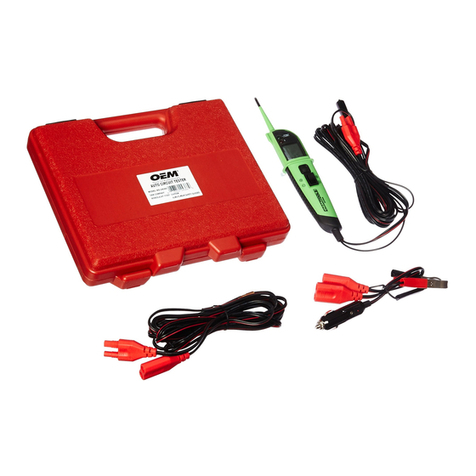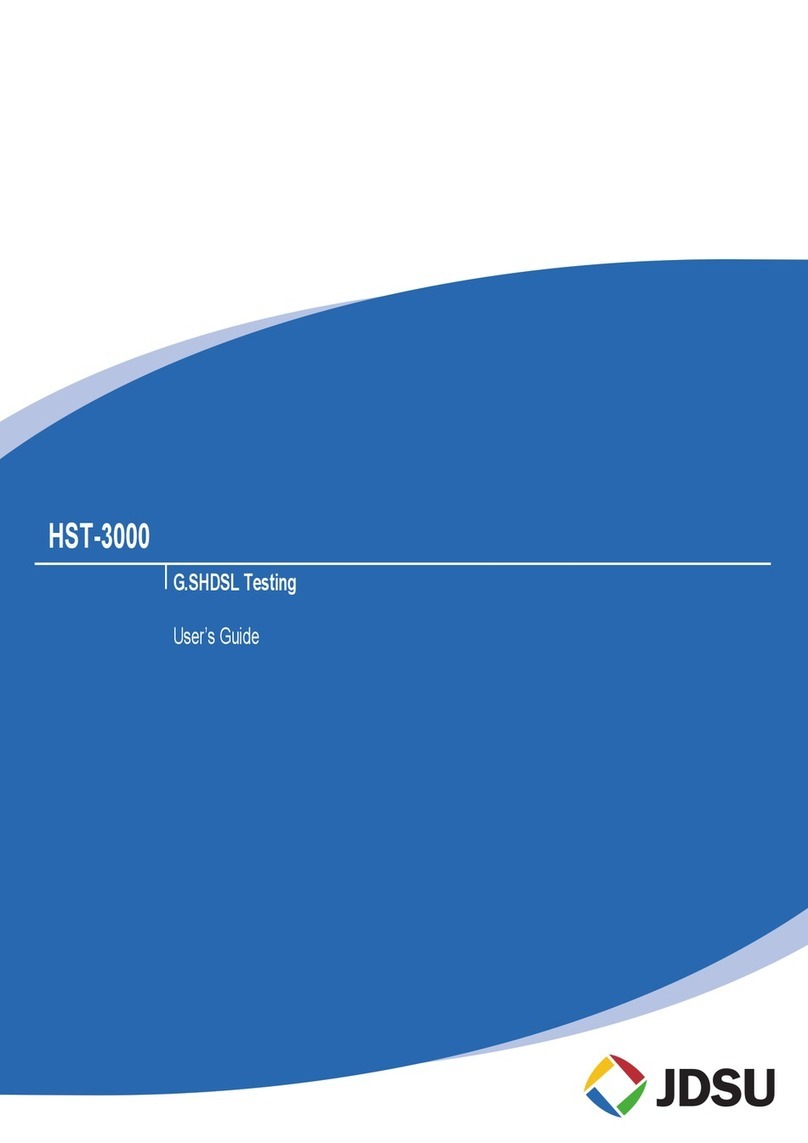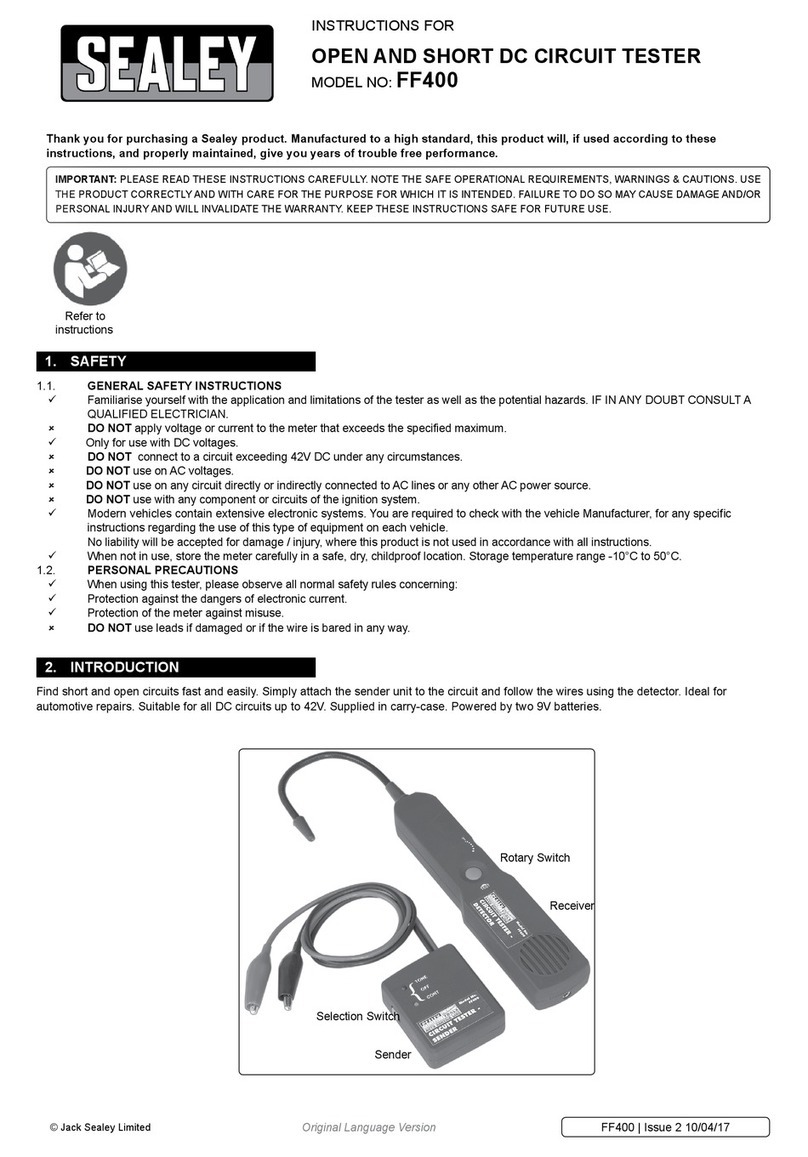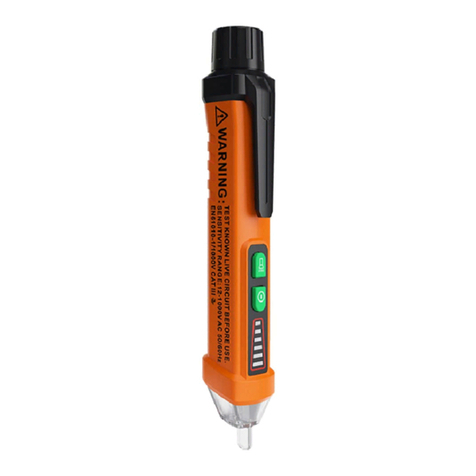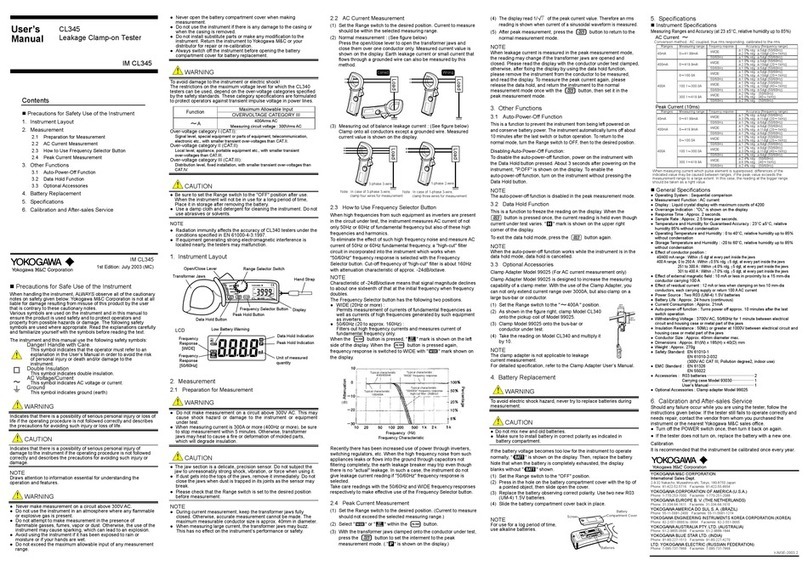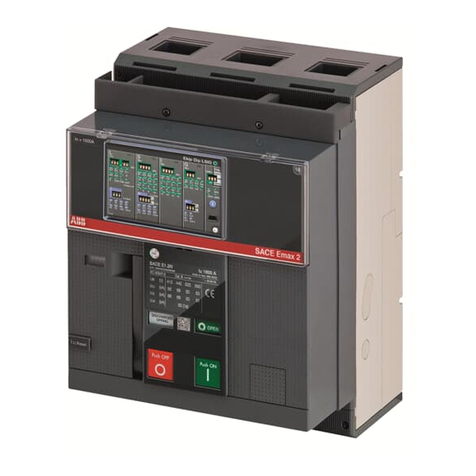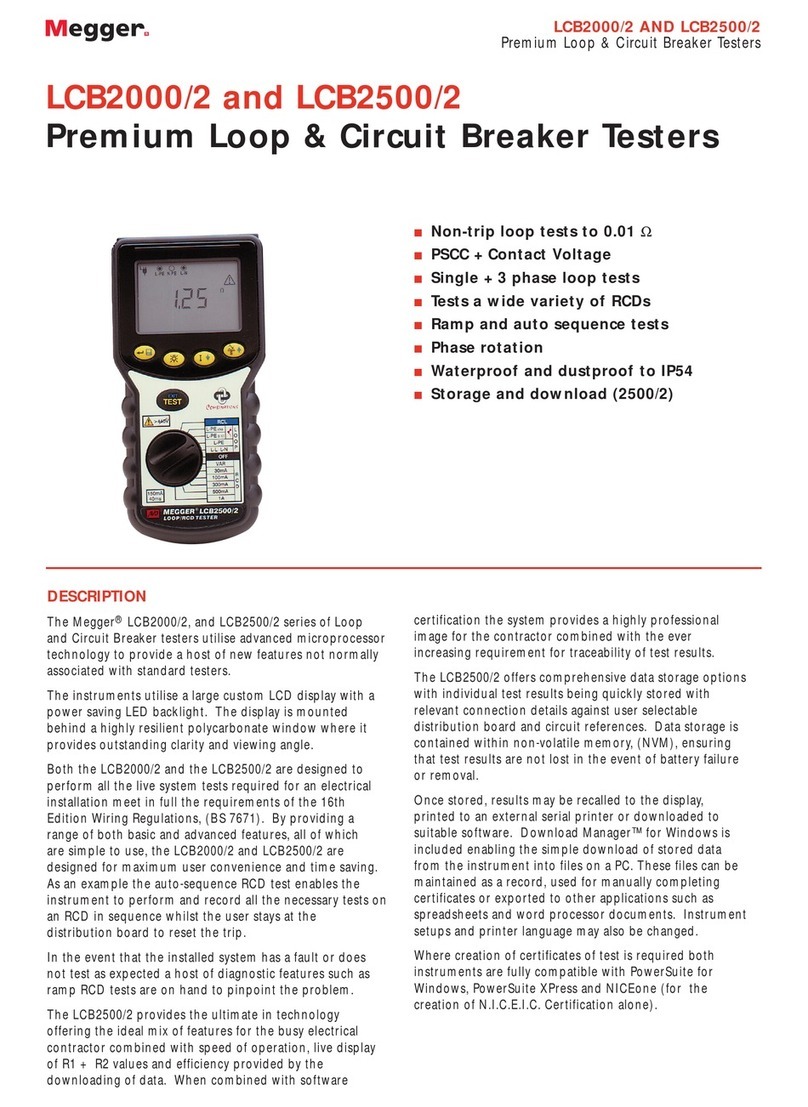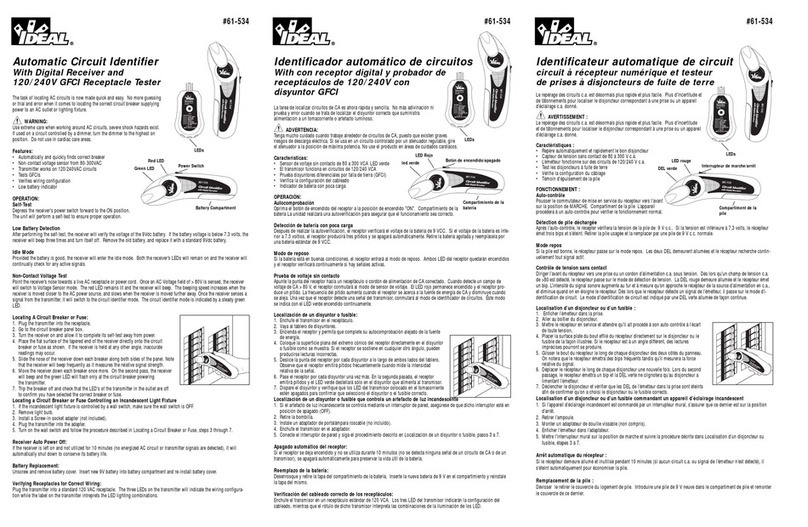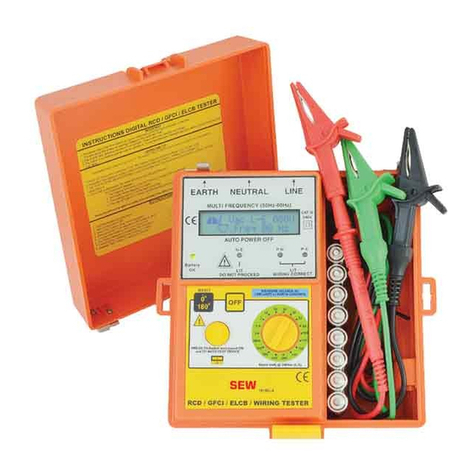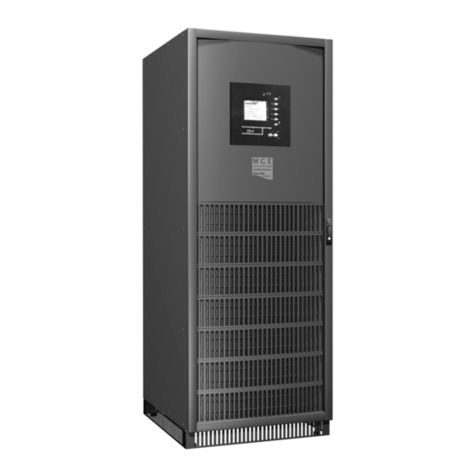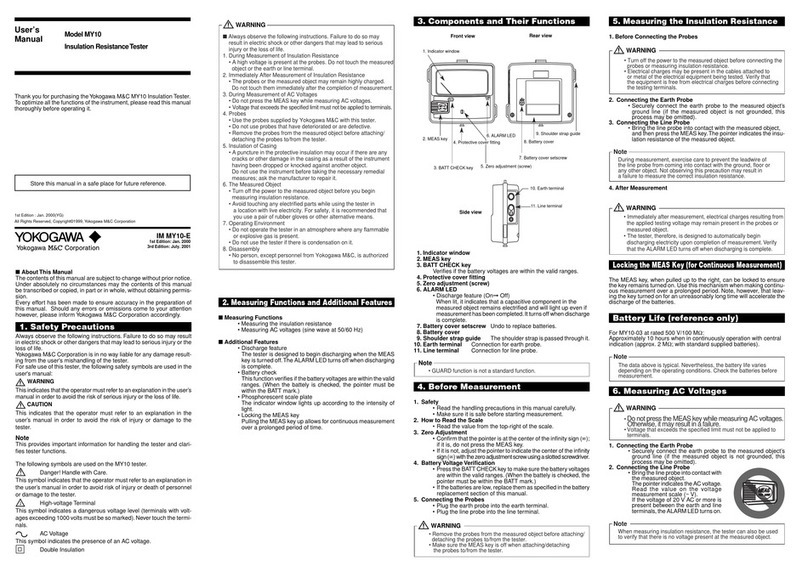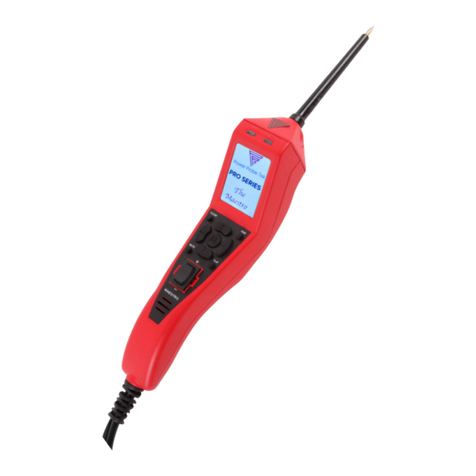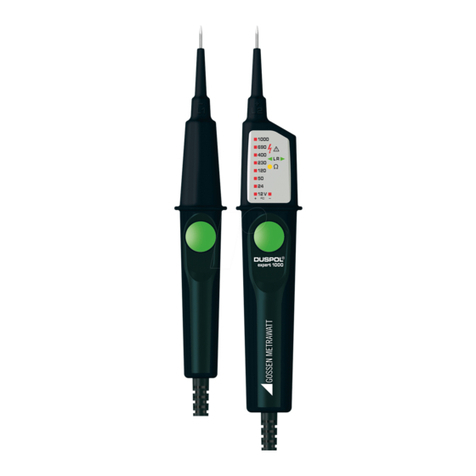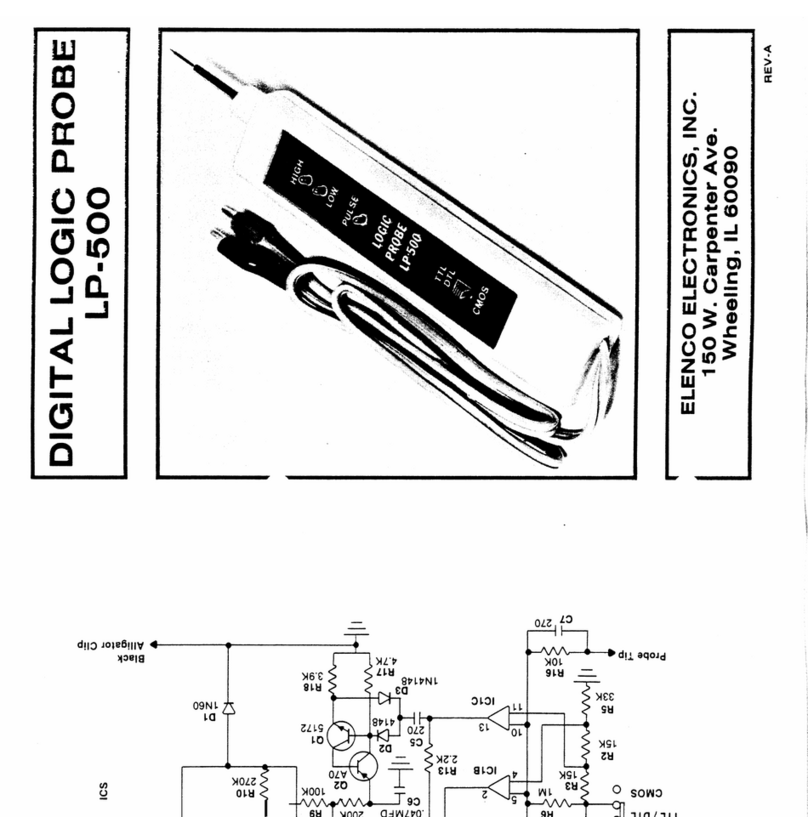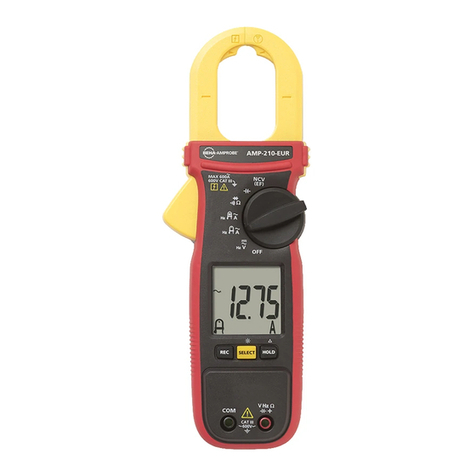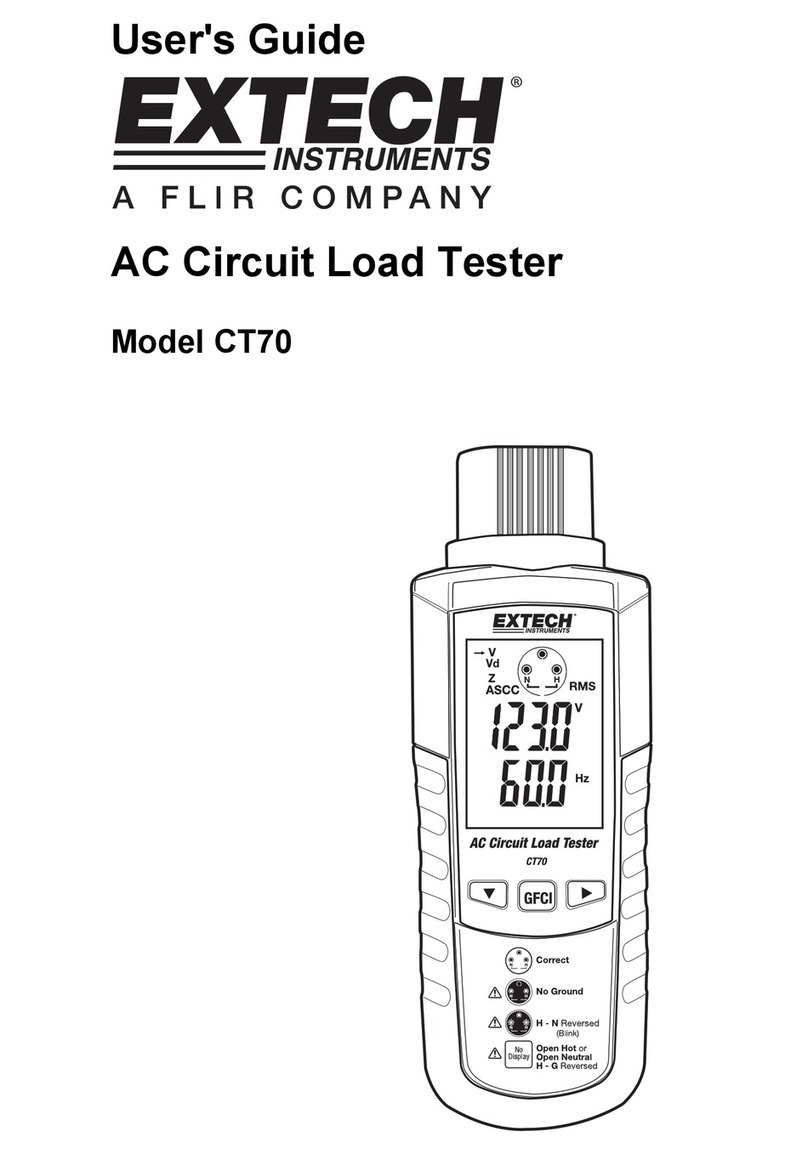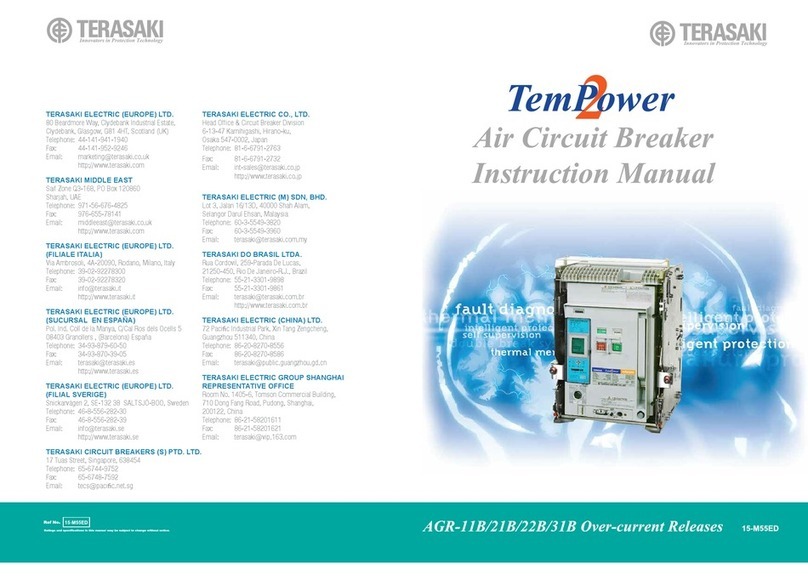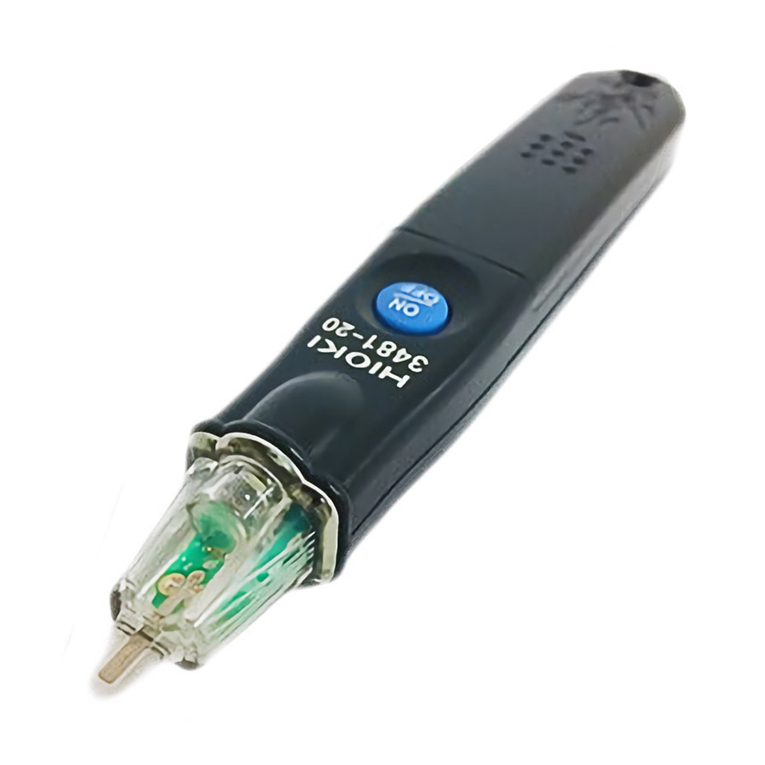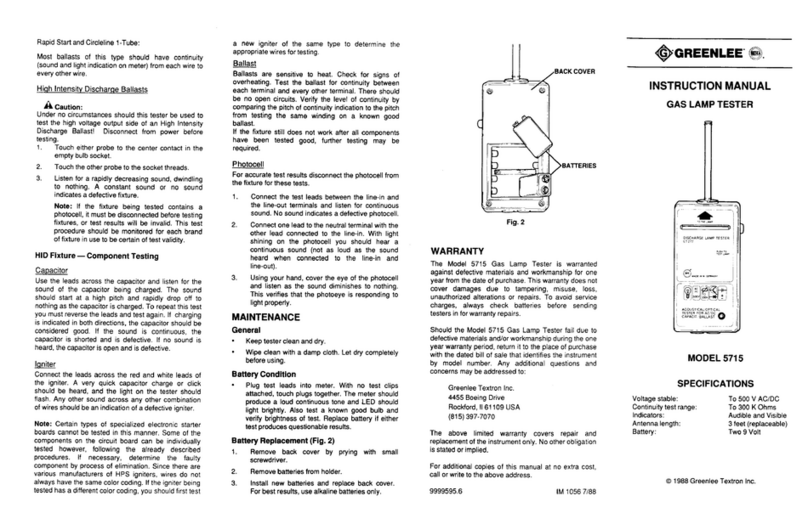
3
batteries being exhausted. This must not be
used for measuring purposes.
■The audible indication may not be heard in
noisy environments.
■Remove the batteries if the tester is not to be
used for a long period of time.
■The voltage tester must not be used with
exhausted or leaked batteries. Danger of
electric shock!
SAFETY ADVICE
■A voltage detector of relatively low internal
impedance, compared to the reference value
of 100 kΩ, will not indicate all interference
voltages or noise having an original voltage
value above the ELV level. When in contact
with the parts to be tested, the voltage
detector may reduce the interference voltage
or noise by discharging temporarily to a level
below the ELV, but it will go back to the
original value when the voltage detector is
removed.
■A voltage detector declaring two values
of internal impedance has passed a
performance test of managing interference
voltages or noice and is (within technical
limits) able to distinguish operating voltage
from interference voltage and has a means
to directly or indirectly indicate which type of
voltage is present.
■When there is no indication of “voltage
present”, it is still recommended to earth
equipment before commencing work.
■A voltage detector of relatively high internal
impedance, compared to the reference value
of 100 kΩ, may not permit to clearly indicate
the absence of operating voltage in case of
presence of interference voltage.
■When the indication “voltage present”
appears on a part that is expected to be
isolated from the installation, it is highly
recommended confirming by another means
(e.g. use of an adequate voltage detector,
visual check of the disconnecting point of the
electric circuit, etc.) that there is no operating
voltage on the part to be tested and to
ensure that the voltage indicated by the
voltage detector is an interference voltage.
■A voltage detector declaring two values
of internal impedance has passed a
performance test of managing interference
voltages and is (within technical limits)
able to distinguish operating voltage from
interference voltage and has a means to
directly or indirectly indicate which type of
voltage is present.
General point: Voltage tests have priority on
the TPT420. That means that if life voltage is
detected this will be indicated. If no voltage is
detected at the probe tip (<6 V), the device is in
continuity mode.
